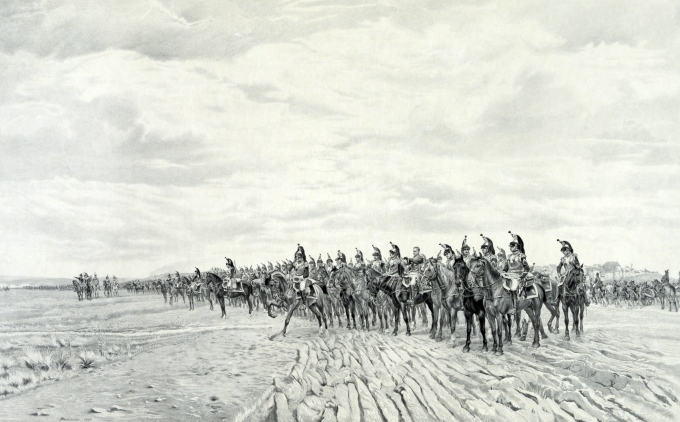Jules Jacquet, Cuirassiers at Austerlitz (1874)
In a series of lightening campaigns against Austria and Russia, Napoleon led France to victory against overwhelming odds. The Battle of Austerlitz that occurred during the War of the Third Coalition (1803-1806) would forever change the shape of central Europe.
By Steven Knorr
The Formation of the Third Coalition (August 1805 – December 1806)
Since 1792, France had been at war with all of the major powers of Europe; though peace had been made with each in turn, Great Britain held out the longest. In March 1802, the Treaty of Amiens ended the hostilities between the United Kingdom and France. Europe seemed at peace. But conflict arose quickly as the British and the Swedes made an agreement that would lead to the forming of the Third Coalition against France. Russia and Austria would also join this coalition; Austria in particular was keen on revenge after suffering embarrassing defeats and ceding territory in the First and Second Coalition wars. The first two coalitions were waged against revolutionary France; the Third Coalition however would mark the beginning of what is now known as the Napoleonic wars. In May 1803, before these alliances were finalized, the UK declared war on Napoleon’s France. By August 1805, Russia and Austria had joined in and all Europe was again at war.

Europe, 1803. Map made from template here.
Napoleon, French Emperor after 1804, developed ambitious plans for invading the British Isles. He assembled a massive invasion force around 200,000 men for the task. But with creation of the Third Coalition and threats looming on the continent, Napoleon abandoned his plans of invasion and turned his attention eastward. Though Napoleon discarded his invasion plan, all was not lost. French troops gained invaluable experience in the months of training that would prove to be of service in their upcoming campaign.
The Ulm Campaign (25 September – 20 October, 1805)
The Austrians moved towards France by concentrating their forces near the city of Ulm, at the time part of the Electorate of Bavaria, a state in the Holy Roman Empire. Karl Mack was the commander of the Austrian forces. He instituted reforms to the army on the eve of the war which would lead to insufficient officer training. This greatly hindered their military organization as officers did not have the proper training to coordinate troop movements. In the previous campaigns against the Austrians, the Italian theater became the primary focus for the French. The Austrians believed the French would focus heavily on Italy again and dispatched 95,000 troops into northern Italy and 72,000 into Ulm. The Austrians hoped with the heavily fortified and mountainous region of Ulm, they could hold out until Russian reinforcements arrived.
Continue reading “The Battle of Austerlitz: War of the Third Coalition”
